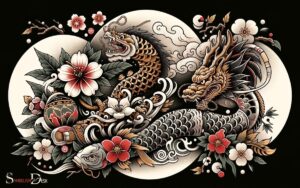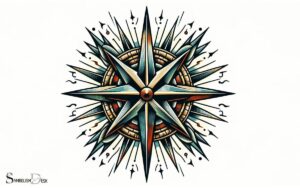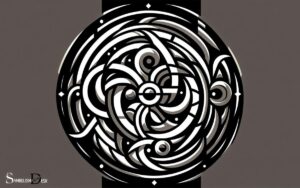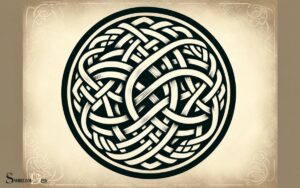Tahitian Tattoo Symbols and Meanings: Explain!
Discover the enchanting stories and symbolism behind Tahitian tattoo designs. Tahitian tattoos, steeped in Polynesian tradition, carry profound meanings, often representing personal status, tribal history, and spiritual beliefs.
This comprehensive guide offers insights into the various symbols and their significance within Tahitian culture, helping you understand the deep-rooted meanings that make these tattoos more than just skin deep.
Tahitian tattoo symbols are deeply connected to the island’s history and the wider Polynesian culture.
Each design has specific meanings and is often used to communicate personal identity, social status, ancestral lineage, and spiritual connections.
Common symbols include:
- Tiki: Represents the human form and Polynesian gods.
- Enata: A motif that signifies humans and gods.
- Turtle: Symbolizes health, longevity, and navigation.
- Shark Teeth: Known as ‘niho mano’, indicative of protection and guidance.
- Ocean Waves: Often represent the world beyond and a person’s journey through life.
These symbols can be combined and customized to tell the wearer’s personal story.
Embrace the legacy of Polynesian artistry through the timeless symbols of Tahitian tattoos, each bearing a tale as unique as its bearer.
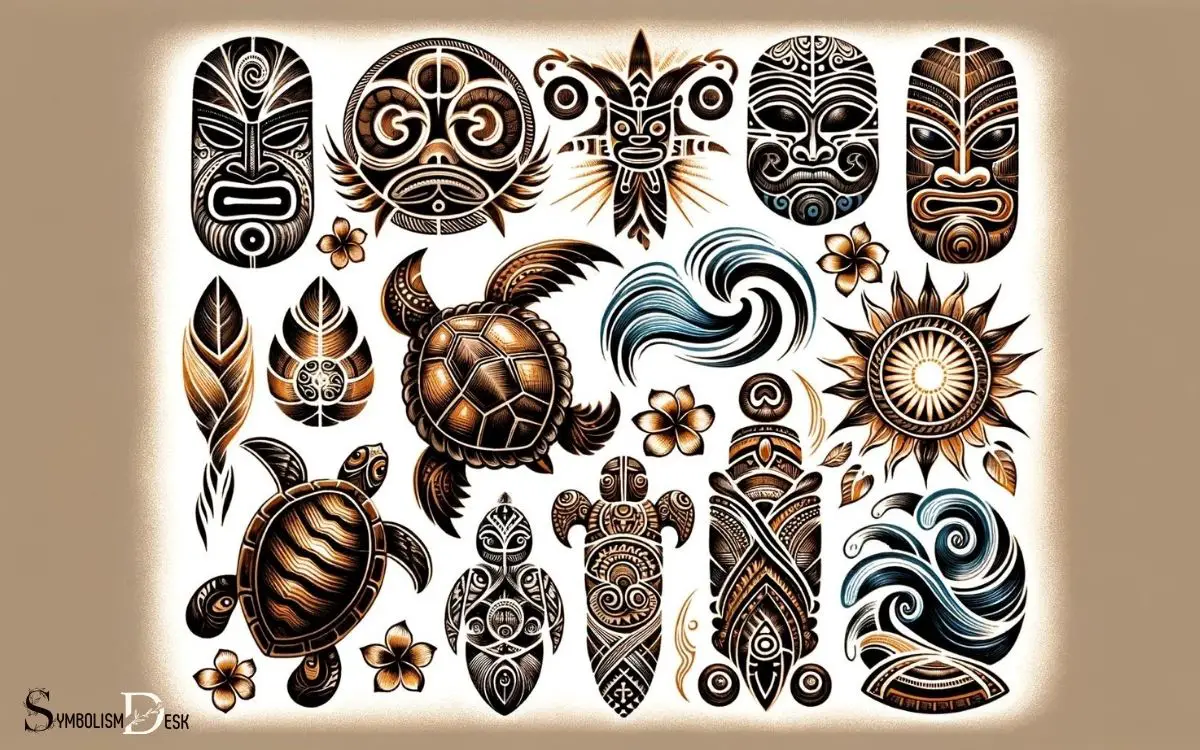
Key Takeaway
Origins of Tahitian Tattooing
The origins of Tahitian tattooing can be traced back to ancient Polynesian culture and traditions. In Tahiti, tattoos hold deep cultural significance, representing a person’s identity, life history, and social status.
The art of tattooing, known as tatau, has been practiced for centuries and is deeply intertwined with the rich tapestry of Polynesian heritage.
In ancient times, tattoos weren’t only a form of body adornment but also served as a means of communication, conveying a person’s genealogy and societal standing.
Each symbol and motif in Tahitian tattooing carries specific meanings, reflecting the individual’s connection to their lineage and community.
The intricate designs and patterns used in Tahitian tattoos are a testament to the enduring legacy of this ancient art form, embodying the cultural heritage of the Polynesian people.
Symbolism of Traditional Motifs
Traditional Tahitian tattoo motifs carry specific symbolic meanings that reflect the individual’s connection to their lineage and community.
These motifs often incorporate elements from nature, such as sharks, turtles, and rays, representing strength, protection, and guidance.
Additionally, symbols like the tiki, a human-like figure, embody ancestral spirits and protection from harm.
Other common motifs include the enata, which signifies friendship and relationships, and the ocean waves, symbolizing life’s ups and downs.
Each motif holds deep significance and serves as a visual language that communicates the wearer’s identity, values, and life experiences.
The intricate combination of these motifs in Tahitian tattooing reflects the rich cultural heritage and spiritual beliefs of the Tahitian people, making each tattoo a deeply personal and meaningful expression of one’s connection to their roots.
Cultural Significance and Rituals
In Tahitian culture, tattooing holds significant cultural and ritualistic importance. Tattoos aren’t simply decorative; they’re a visual language that communicates the wearer’s identity, status, and life history.
In ancient Tahiti, tattoos weren’t only a rite of passage but also a way to connect with and honor ancestors. The process of receiving a tattoo was a sacred ritual, often accompanied by prayers, chants, and ceremonies.
It was believed that the tattooing process was a spiritual journey that connected the individual to their roots and their gods.
Additionally, the placement of tattoos on the body held specific meanings, with each area representing different aspects of life and society.
Even today, Tahitian tattooing continues to be a revered tradition, preserving the cultural and ritualistic significance of this ancient art form.
Evolution of Tahitian Tattoo Designs
Tahitian tattoo designs have undergone a significant evolution over the years, reflecting the cultural and historical transformations of the region.
The historical significance of these designs provides insight into the societal values and beliefs of the past.
Furthermore, the influences on contemporary tattoos showcase the adaptability and enduring appeal of Tahitian tattoo art.
Historical Significance of Designs
The evolution of Tahitian tattoo designs can be traced back through centuries of cultural and historical significance.
Tahitian tattoos, also known as tā moko, have a rich history deeply intertwined with the Polynesian culture.
The designs have evolved over time, influenced by various factors such as societal changes, contact with foreign cultures, and the introduction of new tattooing techniques.
The table below provides a glimpse into the historical significance of some traditional Tahitian tattoo designs, shedding light on their evolution and meanings.
| Design Symbol | Historical Significance | Evolution |
|---|---|---|
| Enata | Represents humanity and gods | Originally simple, now intricate designs |
| Tiki | Symbolizes fertility and protection | Has evolved to include more intricate details |
| Sun | Signifies leadership and power | Initially basic depictions, now more elaborate |
Understanding the historical significance of these designs offers insight into the evolution of Tahitian tattoo art and its enduring cultural importance.
Influences on Contemporary Tattoos
Contemporary Tahitian tattoo designs have evolved under the influence of global cultural exchange and modern tattooing techniques.
As a result, several factors have contributed to the evolution of Tahitian tattoo designs:
- Global Cultural Exchange: The interaction with diverse tattoo traditions from around the world has led to the fusion of Tahitian designs with other cultural elements.
- Modern Tattooing Technology: Advancements in tattooing equipment and techniques have allowed for more intricate and detailed designs, leading to a modern interpretation of traditional Tahitian motifs.
- Artistic Innovation: Contemporary tattoo artists have brought new creative approaches to Tahitian tattooing, incorporating modern art styles and techniques into the designs.
- Personal Expression: Many individuals now seek Tahitian tattoos as a form of personal expression, leading to a reinterpretation of traditional symbols to reflect individual stories and experiences.
- Revival of Traditional Practices: While evolving, there’s also a revival of traditional Tahitian tattooing practices, with a renewed emphasis on authenticity and cultural significance.
Cultural Revival and Adaptation
Influences from global cultural exchange and modern tattooing techniques have significantly shaped the evolution of Tahitian tattoo designs, leading to a resurgence of traditional practices and a renewed emphasis on cultural authenticity.
As Tahitian tattooing continues to experience a revival, contemporary artists are adapting traditional symbols and techniques to create designs that resonate with modern audiences.
This adaptation reflects a balance between preserving cultural heritage and embracing the influences of the present day.
The table below provides examples of traditional Tahitian tattoo symbols alongside their meanings, demonstrating the rich cultural significance embedded in these designs.
| Symbol | Meaning |
|---|---|
| Enata | Humanity, people |
| Tiki | Mythical ancestor, first man |
| Marquesan Cross | Balance, harmony, protection |
Interpretation of Common Tattoo Symbols
Tahitian tattoos are rich in symbolism, with each design holding deep cultural significance. Understanding the interpretation of common tattoo symbols is essential for appreciating the art form and its historical context.
Symbolism in Tahitian Tattoos
The interpretation of common tattoo symbols in Tahitian tattoos reveals a rich cultural significance and historical depth. These designs often incorporate patterns that represent elements of nature, such as the ocean, mountains, and animals, reflecting the close connection between the people and their environment. Similarly, African symbol tattoos explained through their unique motifs also carry deep meanings, often signifying identity, spirituality, or important life events. Together, these traditional tattoo styles offer a glimpse into the values and beliefs of the cultures they originate from, preserving their heritage across generations.
Tahitian tattoo symbols convey a range of meanings, including:
- Enata: Representing humans and their ancestors, this symbol signifies community and connection to one’s roots.
- Tiki: Depicting the first human, this symbol embodies fertility, clarity, and the spirit of creation.
- Shark Teeth: Symbolizing protection and power, shark teeth motifs are often used to shield the wearer from harm.
- Manta Ray: Signifying freedom and beauty, the manta ray represents grace and elegance in Tahitian culture.
- Sun: Reflecting life, prosperity, and leadership, the sun symbol holds great spiritual and cultural significance in Tahitian tattoos.
These symbols are deeply intertwined with Tahitian history and beliefs, adding layers of meaning to the art of Tahitian tattooing.
Cultural Significance of Symbols
Common tattoo symbols in Tahitian culture hold significant cultural meanings and interpretations.
The enata symbol, representing humans, signifies harmony, balance, and connections between individuals. The tiki, a human-like figure, embodies protection and is often worn as a safeguard against harm.
The ocean waves symbolize life’s ups and downs, while the sun represents prosperity, leadership, and richness. The gecko, a revered creature in Tahitian folklore, is a symbol of supernatural power and is believed to bring good luck.
The intricate patterns and designs found in Tahitian tattoos often depict stories of the individual’s life journey, their accomplishments, and their connections to their heritage.
Understanding the cultural significance of these symbols is crucial for those considering a Tahitian tattoo, as it ensures the design carries the intended meaning and respect for the culture.
Contemporary Application and Influences
Contemporary tattoo artists incorporate Tahitian symbols and meanings into their designs, reflecting the ongoing influence of traditional Polynesian tattooing on modern body art.
This fusion of ancient symbolism with contemporary tattooing techniques has led to a resurgence of interest in Tahitian tattoo designs.
The current application and influences of Tahitian tattoo symbols can be observed in various ways:
- Incorporation into Modern Designs: Artists often integrate traditional Tahitian symbols, such as the enata (human figure) or the tiki (semi-god), into their modern tattoo compositions.
- Global Popularity: Tahitian tattoo designs have gained popularity worldwide, with people from diverse cultural backgrounds expressing interest in these symbolic artworks.
- Cultural Respect: Tattoo artists and enthusiasts alike strive to understand and respect the cultural significance of Tahitian symbols, fostering a sense of appreciation for Polynesian heritage.
- Personalized Meanings: Individuals often personalize Tahitian symbols to reflect their own stories, beliefs, and experiences, adding layers of individual meaning to the traditional motifs.
- Artistic Innovation: While staying true to the essence of Tahitian symbolism, contemporary artists also bring innovative interpretations to these ancient symbols, creating a dynamic fusion of tradition and modernity.
Fijian Tattoo Symbols and Meanings
Fijian tattoo symbols and meanings are deeply rooted in the culture and history of the Fijian people. Traditional Fijian tattoos are known as “tatau” or “vakamamaca” and hold great significance.
While the specific symbols and meanings can vary between different Fijian tribes and regions, here are some common Fijian tattoo symbols and their meanings:
- Shark Teeth (Niho ni Vosa): Shark teeth are one of the most common symbols in Fijian tattoos. They represent strength, adaptability, and protection. The shape of shark teeth is often incorporated into the design of the tattoo, resembling rows of sharp teeth.
- Tapa Patterns: Tapa patterns are intricate geometric designs that are used in Fijian tattoos. These patterns often symbolize the interconnectedness of all things, as well as the balance and harmony in life.
- Waves and Ocean Motifs: Given Fiji’s maritime culture and close relationship with the sea, wave patterns and ocean motifs are often included in tattoos. These symbols can represent navigation, voyages, and the importance of the ocean in Fijian life.
- Totemic Animals: Some Fijian tattoos feature totemic animals that hold specific meanings for the wearer or their tribe. These animals can represent qualities such as courage, wisdom, or clan identity.
- Sun and Stars: Celestial symbols like the sun and stars may be included to symbolize the connection between the earthly realm and the spiritual world. They can represent guidance, protection, and divine influence.
- Spears and Clubs: Weapons like spears and clubs may be incorporated into Fijian tattoos to symbolize protection, strength, and warrior spirit.
- Turtles (Vonu): Turtles are considered sacred creatures in Fijian culture and symbolize longevity, resilience, and wisdom.
- Canoes (Drua): Canoe motifs represent the importance of navigation, trade, and exploration in Fijian history. They can also symbolize a sense of journey and adventure.
- Tribal and Family Symbols: Many Fijian tattoos include symbols that are unique to a specific tribe or family. These symbols can represent lineage, heritage, and tribal affiliations.
- Ritual and Spiritual Symbols: Some Fijian tattoos incorporate symbols related to traditional rituals and spiritual beliefs. These symbols may have specific meanings known only to the wearer or their tribe.
It’s important to note that Fijian tattoo traditions have evolved over time, and contemporary Fijian tattoo artists may incorporate both traditional and modern elements into their designs.
Additionally, the meaning of a Fijian tattoo can be highly personal and may vary from person to person, depending on their individual beliefs and experiences.
Conclusion
Tahitian tattooing has a rich history and deep cultural significance. Today, over 60% of Tahitians have at least one tattoo, reflecting the enduring influence of traditional motifs and designs.
From the origins of tattooing to the evolution of contemporary styles, Tahitian tattoos continue to be a powerful form of self-expression and cultural identity for the people of Tahiti.


